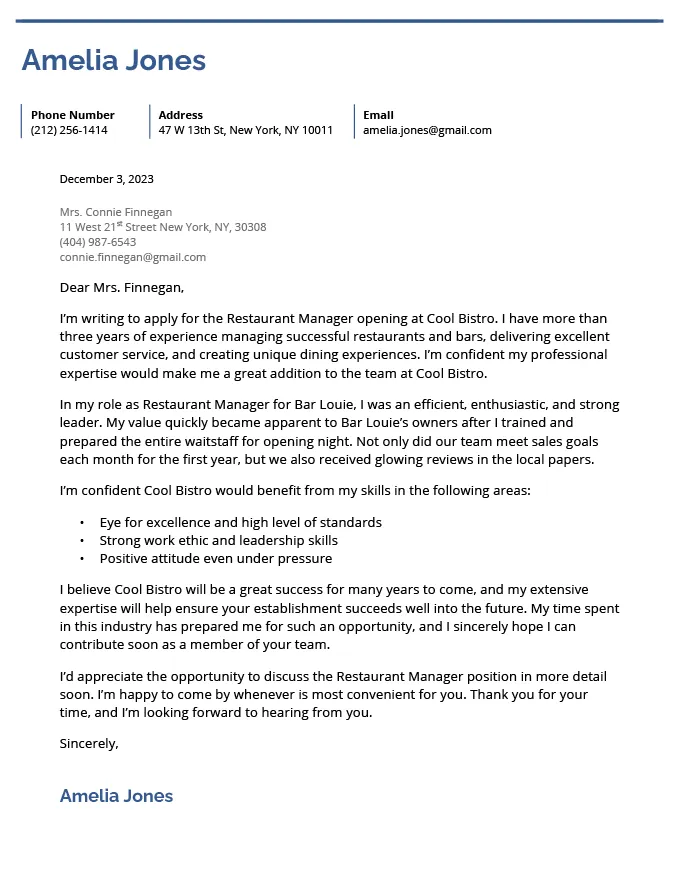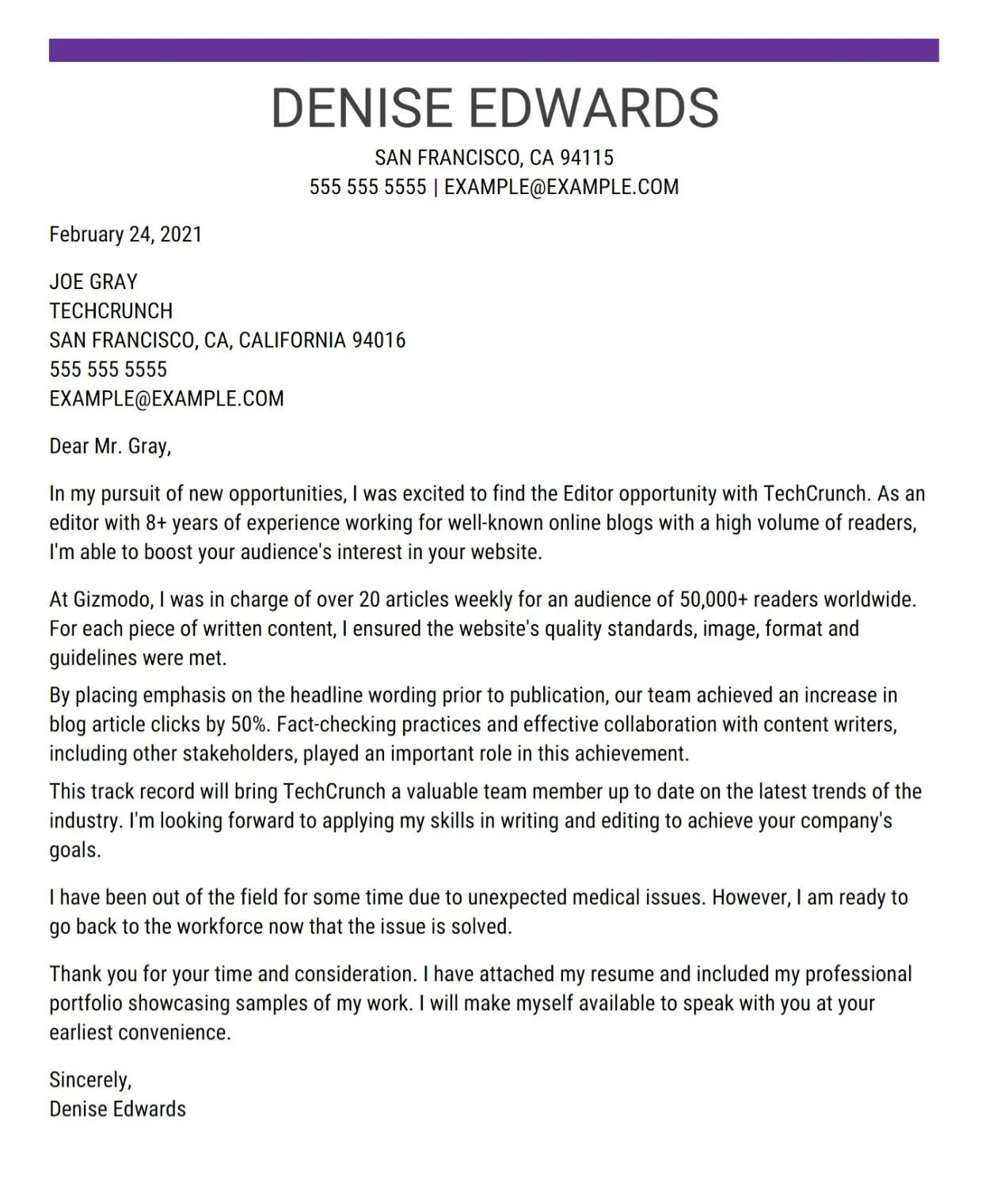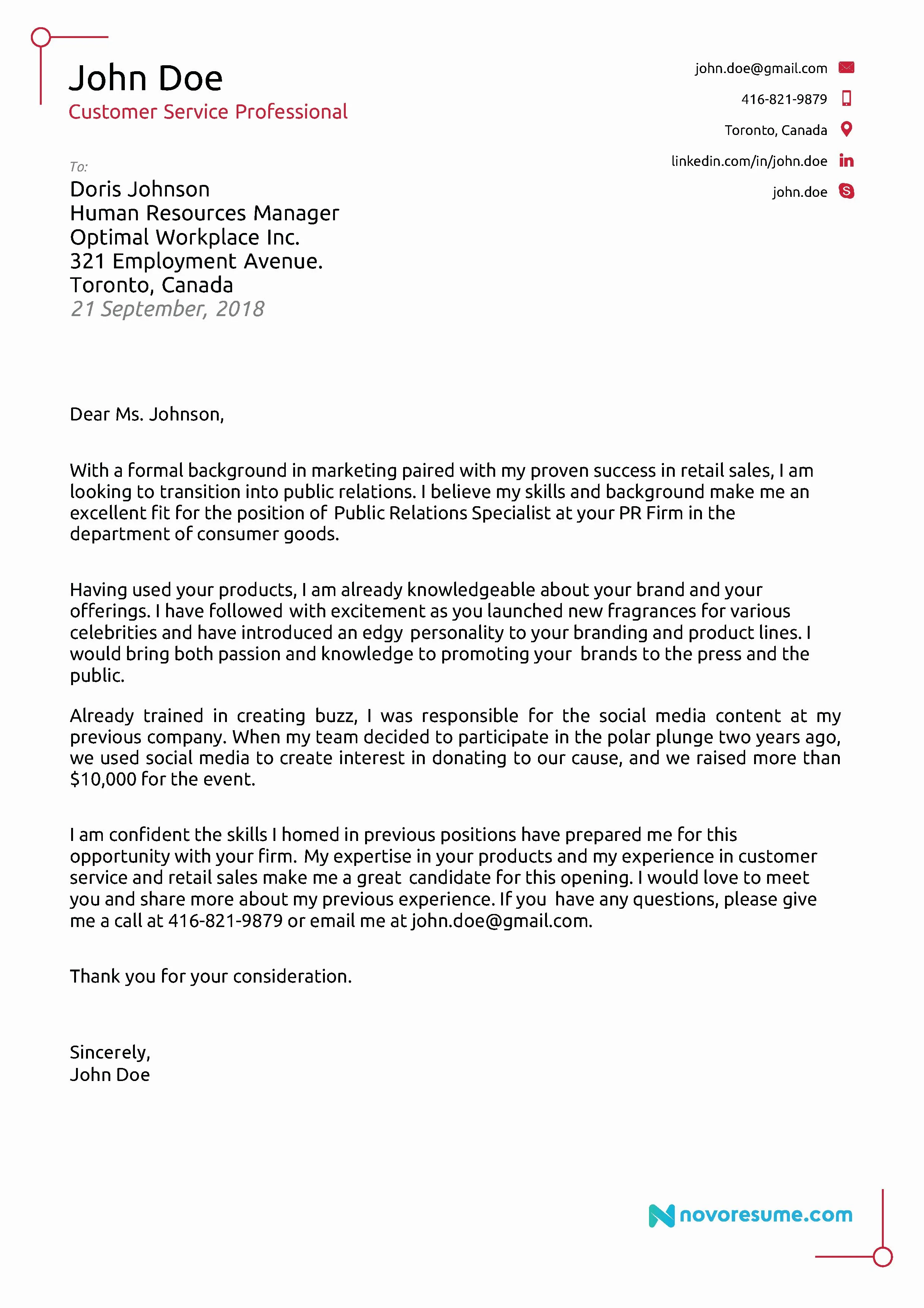What to Write on a Cover Letter [Must-Know]
A cover letter is your first chance to make a great impression on a potential employer. It’s more than just a formality; it’s a critical piece of your job application that complements your resume and provides context to your skills and experience. Unlike your resume, which is a factual summary, your cover letter allows you to demonstrate your personality, enthusiasm, and genuine interest in the role and the company. Knowing what to write on a cover letter is the first step to creating a document that sets you apart from other applicants. Remember that a well-written cover letter can significantly increase your chances of landing an interview. It’s your opportunity to connect with the hiring manager on a personal level, showcasing your suitability for the role beyond the bullet points on your resume.
The Purpose of a Cover Letter
The primary purpose of a cover letter is to introduce yourself and express your interest in a specific job. It allows you to explain why you are a good fit for the position and the company. A cover letter is also a chance to highlight key skills and experiences that align with the job requirements, offering a narrative that complements your resume. It demonstrates your communication skills and attention to detail and shows the employer that you have taken the time to understand the role and the company’s values. Another critical purpose is to personalize your application. Generic resumes often lack the warmth and individual touch that a cover letter can provide. By addressing the hiring manager directly (when possible) and tailoring your letter to the specific job, you make a stronger connection. This personal touch can make you memorable.
Highlighting Your Skills and Experience

One of the most important aspects of a cover letter is highlighting your relevant skills and experience. This isn’t just about listing your qualifications; it’s about showcasing how your skills and experiences make you a good fit for the job. Start by carefully reviewing the job description and identifying the key requirements. Then, select the skills and experiences from your background that directly align with those requirements. Provide specific examples of how you have used these skills in the past and the results you achieved. Use action verbs to describe your accomplishments, making your letter dynamic and engaging. For example, instead of saying “Responsible for project management,” you could say “Led a team of five in managing a complex project, resulting in a 15% increase in efficiency.” This shows your skills and how they have benefited previous employers.
Matching Skills to Job Requirements
Tailoring your skills and experience to match the job requirements is a crucial step. Go through the job description and make a list of the essential skills, qualifications, and experiences the employer is seeking. Then, compare this list with your skills and experience. The goal is to identify the areas where your background aligns with the job requirements. In your cover letter, explicitly mention these skills, using keywords from the job description. Avoid generic phrases and instead provide specific examples of how you have used these skills. Use a format where you mention the skill, provide a brief description of your experience using that skill, and quantify your achievements. This demonstrates that you not only possess the skills but also know how to apply them effectively. This targeted approach ensures that your cover letter speaks directly to the employer’s needs, increasing your chances of getting noticed.
Showcasing Achievements
Your cover letter should not only list your responsibilities but also highlight your achievements. Achievements demonstrate what you have accomplished in previous roles. Rather than simply stating what you did, focus on the positive outcomes you achieved. Use the STAR method (Situation, Task, Action, Result) to structure your achievement statements. Describe the situation you were in, the task you were assigned, the action you took, and the positive result of your action. This method provides a clear, concise, and compelling narrative of your capabilities. By quantifying your accomplishments, you provide tangible proof of your abilities and the value you can bring to the new role. Make sure the achievements you choose are relevant to the job you are applying for and align with the requirements outlined in the job description. This makes your achievements all the more impactful.
Quantifying Your Accomplishments

Quantifying your accomplishments is one of the most effective ways to make your cover letter stand out. Instead of making general statements, use numbers, percentages, and specific metrics to demonstrate the impact of your work. This adds credibility to your claims and provides a clear picture of your achievements. For example, instead of saying “Improved customer satisfaction,” you could say “Increased customer satisfaction scores by 20% through the implementation of a new customer service protocol.” When possible, include metrics related to time, money, efficiency, or any other measurable outcomes. This not only showcases your accomplishments but also demonstrates your ability to analyze and interpret data. By quantifying your achievements, you make your cover letter more persuasive and show the employer that you are results-oriented and able to make a tangible difference.
Structuring Your Cover Letter
A well-structured cover letter is easy to read and makes a positive impression. The standard structure includes an introduction, body paragraphs, and a conclusion. The introduction should grab the reader’s attention and state your interest in the job. Briefly mention where you saw the job posting and why you’re excited about the opportunity. The body paragraphs should highlight your skills, experiences, and achievements that match the job requirements. Use specific examples and quantifiable results to showcase your value. Aim for two to three body paragraphs, each focusing on a different aspect of your qualifications. The conclusion should reiterate your interest and express your desire for an interview. Thank the reader for their time and consideration, and include a call to action, such as mentioning your availability for an interview. A clear, logical structure helps the reader quickly understand your qualifications and makes your cover letter more impactful.
Formatting Your Cover Letter
The formatting of your cover letter is as important as the content. Use a professional font, such as Times New Roman, Arial, or Calibri, in a readable size (11-12 points). Ensure your letter is well-spaced with ample margins (1 inch on all sides) for easy reading. Use clear headings and bullet points to break up text and highlight key information. The letter should be concise, typically one page in length. Avoid long blocks of text; instead, break paragraphs into shorter, more digestible segments. Use bolding strategically to emphasize important information, such as your name, the job title, and key skills. Make sure your letter is free of grammatical errors and typos. Proofread carefully and consider using a grammar checker. Poor formatting and errors detract from your message and create a negative impression, so attention to detail is critical.
Cover Letter Opening Tips

The opening of your cover letter is crucial; it’s your first chance to grab the reader’s attention. Avoid generic openings, like “To Whom It May Concern.” Instead, try to find the hiring manager’s name and address the letter to them directly. This shows that you’ve done your research and are genuinely interested in the role. Start with a strong opening statement that captures the reader’s interest. You can express your enthusiasm for the job or the company. Alternatively, you can start with a compelling statement about your relevant skills or experience. State the position you are applying for and where you found the job posting. Keep the opening concise and focused, setting the tone for the rest of the letter. Make your opening unique and memorable. By making a strong opening, you increase the chances that the hiring manager will read your entire letter.
Cover Letter Closing Tips
The closing of your cover letter is your final chance to leave a lasting impression. End with a clear call to action, expressing your desire for an interview. Reiterate your interest in the position and thank the hiring manager for their time and consideration. Include your contact information, such as your phone number and email address, making it easy for them to reach you. Keep the closing professional and courteous, avoiding any overly casual language. Ensure your closing paragraph reinforces your qualifications and shows that you are a strong candidate. Proofread the closing carefully to avoid errors and ensure it aligns with the rest of your letter. A well-crafted closing can increase your chances of receiving a call for an interview, so it’s important to get it right.
Cover Letter Tone and Style
The tone and style of your cover letter should be professional and reflect your personality. Maintain a formal tone, but also allow your enthusiasm and passion for the role to shine through. Use a clear and concise writing style, avoiding overly complex language and jargon. Keep the tone positive and confident, highlighting your strengths and accomplishments without sounding arrogant. Tailor the tone and style to the specific company and the role you are applying for. Research the company culture and try to align your writing style accordingly. Proofread your letter carefully to ensure the tone is consistent throughout. The goal is to create a cover letter that accurately represents you and showcases your qualifications while being engaging and easy to read. This is vital for establishing a good relationship.
Tailoring Your Cover Letter

One of the most critical tips for a successful cover letter is to tailor it to each job you apply for. A generic cover letter is easily identified and often dismissed. Customize your letter by addressing the specific requirements of the job and the company. Research the company’s values, mission, and culture and demonstrate how your skills and experience align with these. Use keywords from the job description to highlight your relevant qualifications. Mention specific projects or experiences that are relevant to the role. Avoid using a template and personalize your letter to show your genuine interest in the position. Tailoring shows that you have taken the time to understand the job requirements and are truly interested in the opportunity. Taking the time to tailor your cover letter to each job application significantly increases your chances of landing an interview.
Proofreading and Editing Your Cover Letter
Proofreading and editing your cover letter is essential for making a positive impression. A cover letter with grammatical errors, typos, or formatting issues reflects negatively on your attention to detail and professionalism. After writing your cover letter, take time to review it carefully. Check for spelling errors, grammatical mistakes, and punctuation errors. Read the letter aloud to catch any awkward phrasing or sentences that don’t flow smoothly. Consider having a friend, family member, or career counselor review your cover letter for feedback. They can provide a fresh perspective and help you identify areas for improvement. Ensure your letter is well-formatted, with clear headings, appropriate spacing, and a professional font. A polished, error-free cover letter shows that you care about the details, making a great impression on the employer.
Common Cover Letter Mistakes
Avoid these common cover letter mistakes to maximize your chances of success. One of the biggest mistakes is using a generic cover letter that isn’t tailored to the specific job. Another mistake is focusing too much on what you want rather than how you can benefit the employer. Don’t make it too long; keep it concise, usually one page. Avoid repeating information from your resume verbatim; the cover letter should provide context and additional details. Ensure your cover letter is free of errors in grammar, spelling, and punctuation. Avoid being too casual in your language or tone; maintain a professional approach throughout. Don’t include negative information about your past experiences or employers. Avoid lying or exaggerating your qualifications; always be honest and truthful. By avoiding these common pitfalls, you can create a cover letter that showcases your strengths and makes a strong case for your candidacy.
Cover Letter Examples [for Inspiration]

Reviewing cover letter examples can provide inspiration and guidance as you write your own. Look for examples that are relevant to your industry and the type of job you are applying for. Pay attention to how the writers structure their letters, highlight their skills, and express their enthusiasm. Analyze the tone and style of different cover letters to understand what works well. Use the examples as a starting point, but customize your own cover letter to reflect your unique experiences and personality. Don’t copy the examples verbatim; instead, adapt them to fit your specific situation and the requirements of the job. Many websites offer cover letter templates and examples. By studying these examples, you can learn the best practices and techniques for writing a compelling cover letter that makes a strong impression on potential employers.
